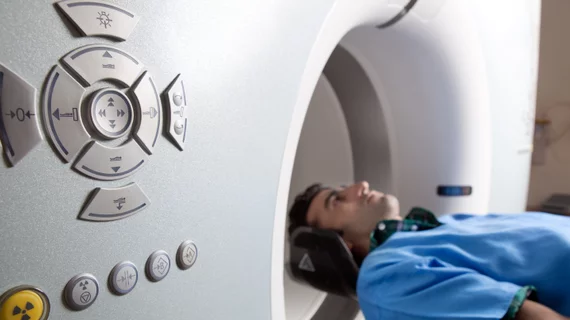A patient-centered approach to contrast administration in CT, outlined this month in the Journal of the American College of Radiology (JACR), balances contrast dose with radiation dose, reportedly increasing patient safety while maintaining high-quality diagnostics.
Mannudeep K. Kalra, MD, and co-authors said in JACR that while tech has advanced to the point of tailoring scan protocols and radiation doses to unique patient characteristics like size, body regions and clinical indications, researchers have largely failed to incorporate contrast agents into that research.
“Over the past two decades, the optimization of CT radiation dose has garnered a great deal of attention because of concerns regarding the potential for radiation-induced carcinogenesis,” Kalra, an assistant radiologist in the divisions of thoracic and cardiac imaging at Massachusetts General Hospital, and colleagues wrote. “Despite the close relationship between the contrast volume and the radiation dose, there has been less focus on adapting contrast media administration to different patient sizes and clinical indications.”
Still, clinicians have been gravitating more toward patient-centric practices, the authors said, as is evidenced by the emphasis of the words “individualized,” “personalized” and “patient-centric” in the 2010 Affordable Care Act.
Optimized patient-centric contrast-enhanced CT (CE-CT) protocols aim to shift the clinical focus from fixed radiation and contrast doses to ones specific to each patient. The individualized dosing accounts for factors like a patient’s weight, height, body mass index and body surface area.
“Applying a patient-centric approach implies adjusting variables in a procedure according to the individual patient,” Kalra et al. wrote. “For CE-CT, a patient-centric approach starts with the clinical scenario and then factors in all of the relevant parameters.”
When focusing on patient quality during CE-CTs, it’s important to first determine whether lower contrast dose or lower radiation dose should take priority, the researchers said. If aiming for a lower contrast dose—which might be the case if a patient suffers from compromised renal function or is at risk for contrast-induced nephropathy (CIN)—physicians could modify their scan techniques by using low tube potential, dual-energy CT or iterative reconstruction to obtain diagnostic information with a reduced iodine dose. In the case of vascular indications, the authors wrote, physicians could employ a high iodine delivery rate.
If a lower radiation dose is the goal, as is the reality for many pediatric patients who have otherwise normal renal functions and no risk factors for CIN, Kalra and colleagues said high contrast enhancement, iterative reconstruction, use of low tube potential or dual-energy CT could help reduce radiation. Limiting the number of phases with dual-energy CT and using a high contrast medium can also limit radiation dose.
After deciding priority, the authors said doctors might consider adapting their iodine delivery rate, injection flow rate and total iodine load for individual patient size using BMI or body weight and for vascular CT protocols using similar parameters.
Kalra and his team said physicians will hopefully be able to streamline these strategies down the road using software tools to automatically calculate contrast volume and injection rate or multipatient contrast vials to avoid contrast waste.
“A patient-centric approach to CT balances contrast dose with radiation dose, thereby enhancing patient safety while providing high-quality diagnostic examination,” they wrote. “Personalized contrast administration is intimately linked with radiation dose; radiology best practice requires a multistep approach to optimize patient quality and safety, as well as efficacy and efficiency.”

